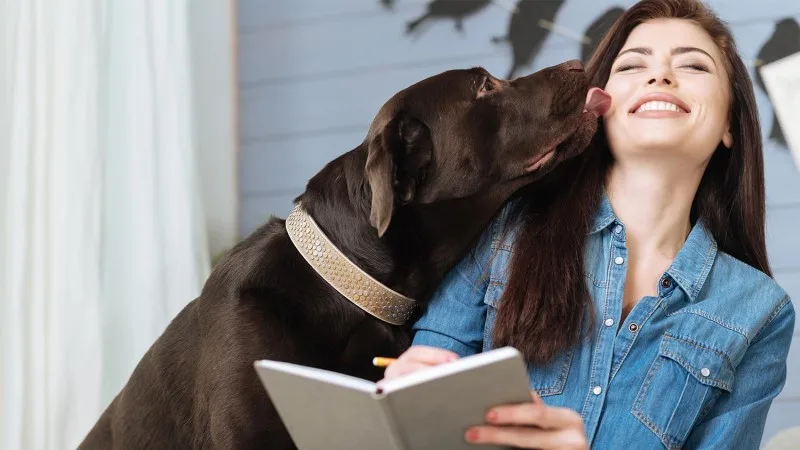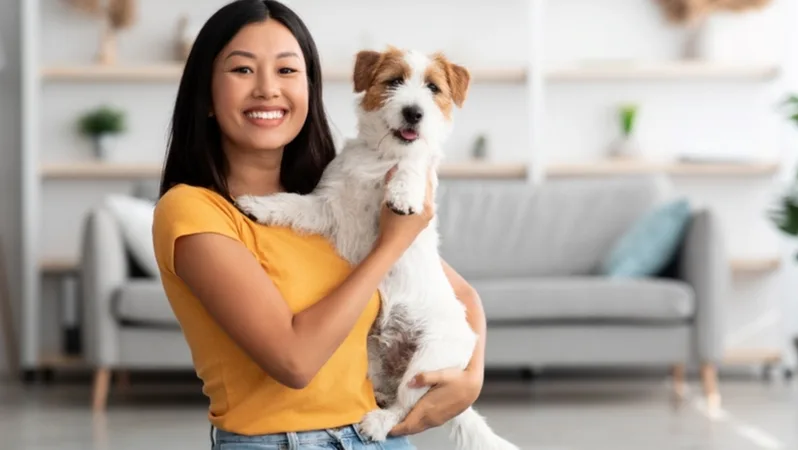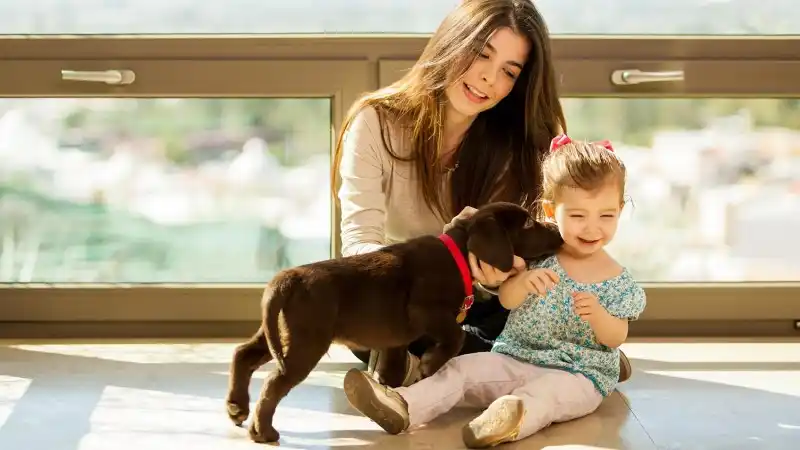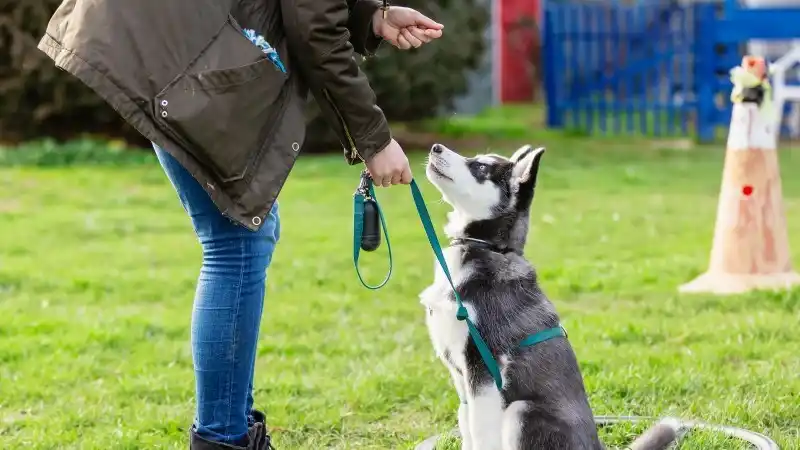What Your Dog is Trying to Tell You
Dogs communicate in their own language by barking, whining, or yelping. Find out what your dog is trying to tell you and understand what these noises mean!

Ever wonder what your dog tries to tell you when they whine or yelp? We may chat with our pups as we would with any other family member, but it’s important that when they’re talking back, we understand what they’re trying to communicate. Listen to the vocalizations and odd noises your dog makes to better understand what they’re trying to say to you.
Dog Talk
Yelping, whining, whimpering, growling, barking, howling, and groaning are some of the best-known forms of canine expression. But, if you listen carefully, you’ll recognize and learn their full vocabulary. If you suspect your dog is in pain, it is important to consult with a vet for pain medication and a wellness exam. For example, if a dog starts yelping or whining, it may be because of the following:
Presence of a stranger
Joint or muscle problem
Separation anxiety
An ear infection
General physical pain
Yelping
When dogs let out a sharp yelp, they likely experienced some kind of physical pain. This often happens when someone accidentally steps on a paw or you’re playing too rough. If your dog yelps when being petted, they may have gotten injured when playing outside or with other dogs. It’s essential to look them over for any open wounds and keep an eye on them for signs of limping to determine whether or not they need to see a veterinarian.
Another reason your dog might yelp is that they’re surprised or scared. Dog yelping happens most often when they dislike a sudden noise, such as fireworks, thunder, loud cars, or a vacuum.
Whining or Whimpering
Your dog whines or whimpers for several reasons. If the whining is joined by pawing at your leg or staring at you expectantly, your pup wants something. This is usually food, a treat, or a walk, but it can also be other things. For example, if your furry friend often likes to sit next to you on the couch, they may whine if something is blocking their path, such as a book or laptop.
Why do dogs whimper? If your pup is upset, anxious, or under duress, they may also whine or whimper to let you know they need comfort. Once you’ve learned what is causing your dog stress, you can focus on alleviating their discomfort by avoiding these circumstances. For example, explore different forms of enrichment, such as a food-filled toy.
Whining may indicate your dog is injured, especially if combined with excessive panting.
Growling
While dog growling is often associated with being aggressive and dangerous, that’s not usually the case at all. Growling is a vital communication tool for dogs. For example, some dogs will growl while playing to demonstrate how much fun they’re having. In other cases, a dogs growl likely means your dog is annoyed or feels threatened. Don’t ever punish your dog for growling – this is a final warning before things escalate to a bite.
Reverse Sneezing
For new dog owners, reverse sneezing can be extremely scary. The noise resembles deep, phlegm-filled inhaling and snorting that may lead you to believe that your dog is having trouble breathing. Reverse sneezing occurs when your dog’s soft palate is irritated, making it difficult for your pup to inhale. While the sound can be alarming, it’s often temporary, and your dog can fix the issue independently. Many factors can cause reverse sneezing, such as pollen, eating too quickly, and strenuous exercise.
Barking
Short, rapid barking is a common sign of stress. For example, your dog may be trying to tell you that someone is at the door or that kids are playing on your block. Short rapid barks while you’re out running errands or at work can also signal that your pup is experiencing separation anxiety. They may need extra stimulation while you’re out of the house, such as a safe food-fillable device or other toys. Try this canine anxiety assessment test if you suspect your dog suffers from anxiety.
Howling
A dog howling is not always their way of tapping into their primal roots! Sometimes, it’s a reaction to a stimulus such as sirens, a telephone ringing, or music.
A few specific breeds, like Huskies, Malamutes, and hounds, tend to howl when they hear certain sounds. For example, research tells us wolves howl when celebrating, confirming territory, and reassembling after returning to their territory.
Groaning
A groan may not tell us anything in particular. However, you’ll likely hear this when your dog settles into their favorite spot for a nap. If your dog is being ignored or not getting what they want, they’ll make this sound involuntarily. Depending on the dog, this vocalization may sound as if they’re annoyed with their owner!
Look Who's Talking
Understanding what our pups are trying to say is every dog owner’s dream come true. While we may never be able to get our dogs to speak to us in the traditional sense, that doesn’t mean we can’t learn to interpret their vocabulary. Because, let’s face it, we talk to our pets more than we talk to most humans!
Take some of the stress out of pet ownership with Accident & Illness Coverage from AKC Pet Insurance (underwritten by Independence American Insurance Company). Our dog pet insurance plans are designed to be there when you need them, allowing you to focus more on the health of your pet and less on costly veterinary bills.

Every Dog and Cat Deserves the Pet Insurance of Champions
Get prize-winning care for your pets.



